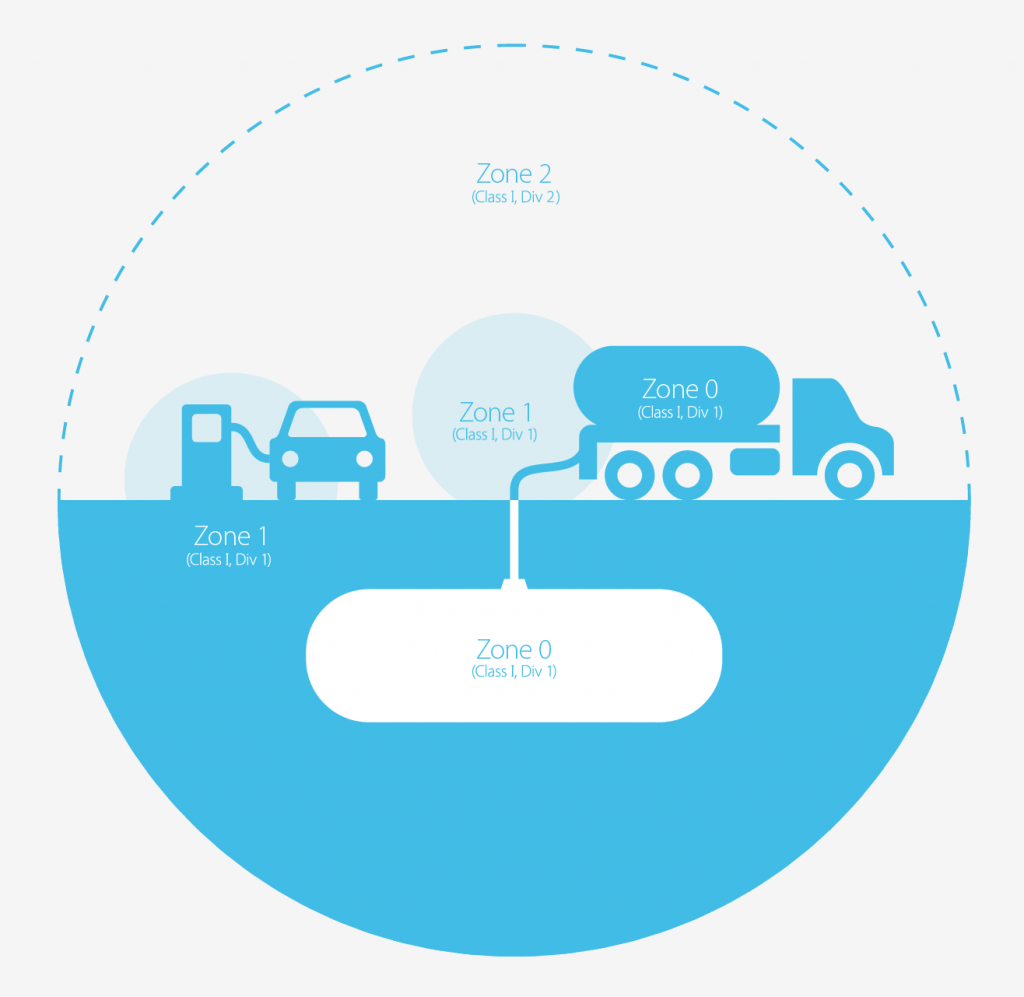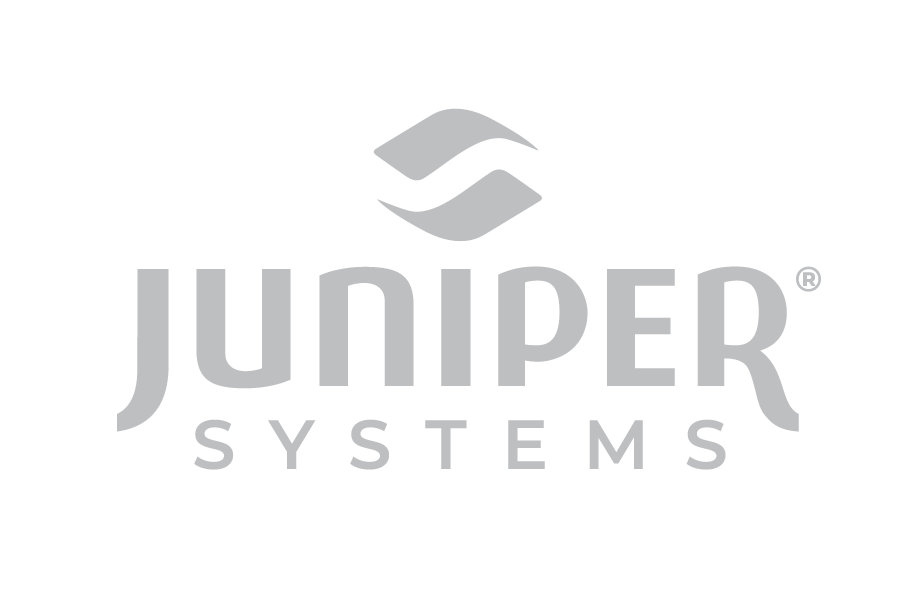
At job sites around the world, a classification system for hazardous locations – hazloc for short – keeps workers safe from potential explosions and fires caused by equipment.
Oilrigs, grain handling facilities, refineries, construction sites, and an abundance of other job sites consult and meet standards that define hazardous locations and certify devices to work within those locations safely.
Here is what you need to know about hazloc products, hazardous area classifications, and the hazloc standards that provide peace of mind.

What are the hazardous (hazloc) area classifications?
Hazardous locations are classified areas that contain gases, vapors, dust, or fibers that create a risk for fire or an explosion.
Government and workplace safety inspectors rely on hazardous location standards to classify areas based on criteria like likeliness of explosive or flammable material to exist under normal operating conditions, type of explosive or flammable material, and type of jobsite enclosure and ventilation.

North American hazloc
In North America, the U.S. Occupational Safety and Health Administration (OSHA) sets jobsite requirements based on a web of safety standards developed by industry standardization organizations like the National Fire Protection Association (NPFA) and American Petroleum Institute (API).
North American hazardous locations defined by these organization hazard classes and division groups. The three hazard classes – Class I, Class II, and Class III – categorize locations based on the type of substance in the atmosphere.
- Class I flammable gases: acetylene, hydrogen, ethylene, propane, and methane
- Class II combustible dust: metal dust, carbonaceous dust, and others dust like flour, grain, wood, and plastics
- Class III fibers and flyings: fibers and flyings
The likeliness of explosive or flammable material in an area receives a division and zone classification based on the North American standard. The two divisions classify the hazard levels and the two zones determine whether the hazard is from gas or dust.
- Division 1: continuous and intermittent hazard during normal operating conditions
- Division 2: abnormal hazard during normal operating conditions
International hazloc
Elsewhere in the world, the ATEX directive from the European Union and hazardous location standards from the International Electrotechnical Commission (IEC) define hazardous locations. ATEX relies on the IEC classification system. and both share
The IEC classification relies on zones to classify hazardous locations. Zone 0, Zone 1, and Zone 2 represent areas with gases or vapors. Zone 20, Zone 21, and Zone 22 represent areas with dust.
- Zone 0, Zone 1, and Zone 2: gas or vapor
- Zone 20, Zone 21, and Zone 22: dust
Each zone number represents the likeliness of explosive or flammable material in an area – with the lower number representing a higher hazard level.
- Zone 0 and Zone 20: continuous and sustained hazard during normal operating conditions
- Zone 1 and Zone 21: intermittent hazard during normal operating conditions
- Zone 2 and Zone 22: abnormal hazard during normal operating conditions
What is the hazloc product standard?
In lockstep with international and North American area classification standards, standardization organizations have developed certification requirements for equipment operation in hazardous locations. These requirements ensure employers and workers that equipment will not ignite a fire or explosion in a hazardous location.
North American organizations like the National Fire Protection Association (NFPA) and Canadian Standards Association (CSA) outline minimum equipment requirements in the National Electric Code (NEC) and Canadian Electric Code (CEC). These codes certify equipment that can operate safely in hazardous locations.
These standards certify equipment under the North American class, division, and zone system. The NEC and CEC also classify protection type – like flameproof and dust-protected – with a letter-based code system and a separate letter-number code, which rates the operational surface temperature of a device.
The ATEX directive from the European Union and hazardous location standards from the International Electrotechnical Commission (IEC) categorize electrical equipment based on the type of protection required for safe equipment operation in its hazardous location zones. The key difference between ATEX and the IEC standard is that ATEX is a legal requirement for equipment in hazardous locations and IEC is only a certification of safety.
The North American and international standards certify devices as functionally safe – in normal operating conditions – from igniting flammable gas, vapor, dust, and fibers in hazardous locations.
The standards outline a variety of test outcomes and design requirements that devices must meet for the standard. The requirements of the standards touch on things like fuses, circuit breakers, and wiring that could ignite gas or particulate. Manufacturers utilize the standards to build their products, matching design outlines and building products to meet or exceed test requirements.
How does a device become hazloc certified?
Companies that operate work sites with hazardous locations require certified products that ensure worker safety.
Hazardous locations certification for equipment requires testing by an accredited laboratory. In the United States, the U.S. Occupational Safety and Health Administration (OSHA) formally recognizes firms, known as Nationally Recognized Testing Laboratories (NRTL). After one of these firms completes a hazardous locations equipment evaluation that meets the requirements set by the hazardous location standard, the NRTL lists the product. Listed products can then utilize labeling from the NRTL to indicate its certification.
Hazardous location equipment evaluations assess the design and specifications of components that are critical for safety. The assessments are unique to the type of device and can include spark testing, surface temperature testing, ingress protection testing, and drop testing, among others to ensure safe operation.
The evaluation also audits the manufacturing facility that built the equipment to verify consistency in production.
What is intrinsic safety?
Intrinsically safe equipment safely operates inside highly hazardous locations. This equipment is certified in North America for Class I, Class II, and Class III hazards in Division 1 hazardous locations. Internationally, this equipment can operate in Zone 2 and Zone 22 areas.
North America
- Class I flammable gases, Class II combustible dust, Class III fibers, and flyings
- Division 1: continuous and intermittent hazard during normal operating conditions
International
- Zone 0 and Zone 20: continuous and sustained dust or vapor hazard during normal operating conditions
What is Class I, Division 2?
Class I, Division 2 equipment – sometimes called Class I, Div 2 – safely operates inside areas susceptible to hazardous materials under rare circumstances. The title is shorthand for equipment that can operate around Class I, Class II, and Class III hazards in Division 2 work areas.
The popular North American equipment classification works for most job sites.
North America
- Class I flammable gases, Class II combustible dust, Class III fibers, and flyings
- Division 1: continuous hazard and intermittent hazard during normal operating conditions
Which Juniper Systems handhelds are Class I, Div 2?
The Mesa 3 Rugged Tablet is available in Class I, Division 2 hazloc models.
The Mesa 3 – a sleek waterproof, dustproof, and shockproof tablet – runs Windows 10 or Android. It features a daylight-readable 7-inch display powered by an all-day battery.
If you want to learn more about the hazloc, contact us here. Visit Juniper Systems online.

